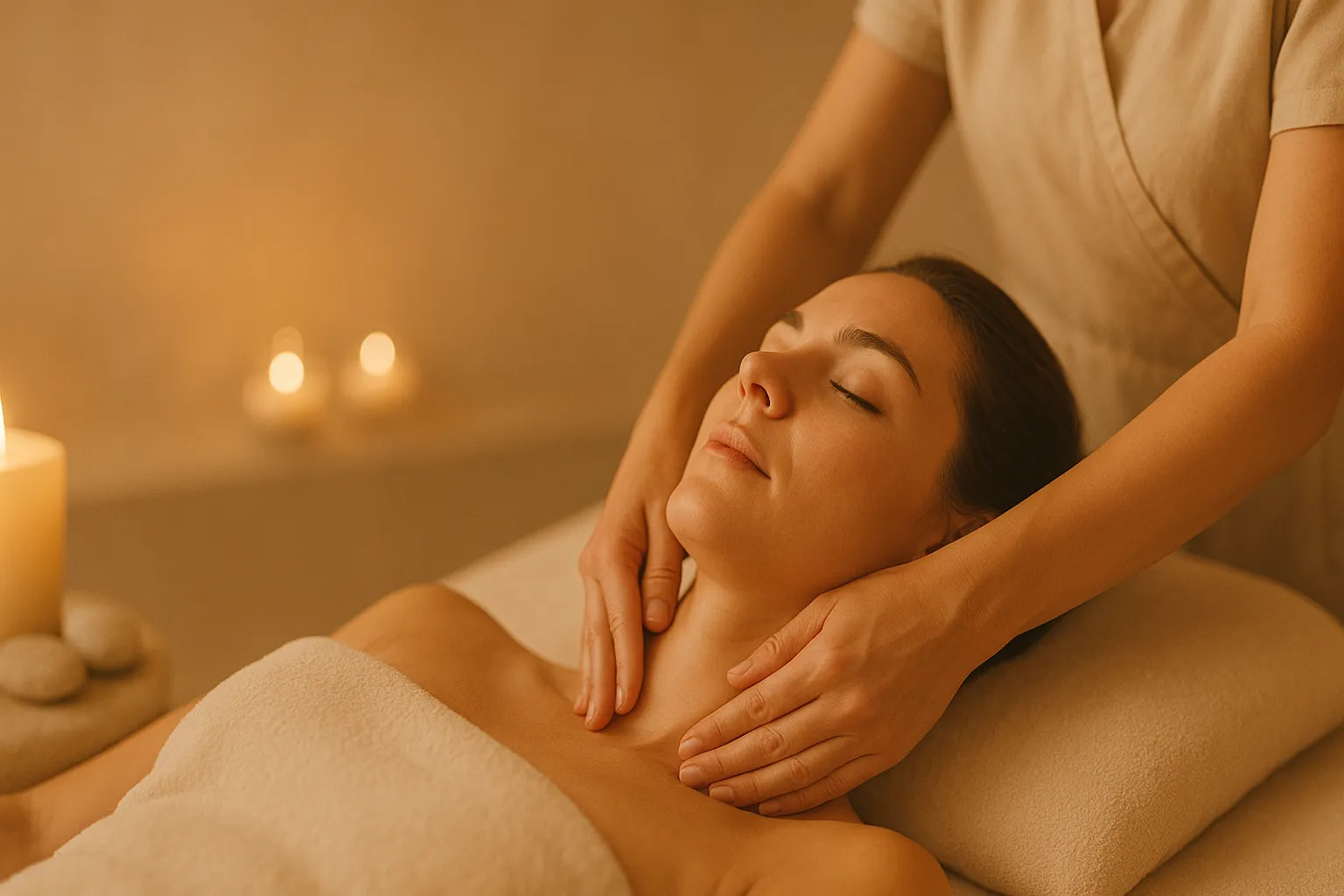The History, Development, and Benefits of Lymphatic Drainage Massage
Lymphatic drainage massage, also known as Manual Lymphatic Drainage (MLD), is a specialized technique designed to stimulate the lymphatic system, promoting the flow of lymph fluid throughout the body. This gentle and rhythmic massage has a fascinating history and offers numerous health benefits. History and Development
 The origins of lymphatic drainage massage can be traced back to the 1930s when Danish physiotherapist Dr. Emil Vodder and his wife, Estrid Vodder, developed the technique. While working on the French Riviera, they observed that many patients with chronic colds and sinus infections had swollen lymph nodes. Through experimentation, they discovered that gentle manual pressure could stimulate the lymphatic system, reducing swelling and improving overall health
The origins of lymphatic drainage massage can be traced back to the 1930s when Danish physiotherapist Dr. Emil Vodder and his wife, Estrid Vodder, developed the technique. While working on the French Riviera, they observed that many patients with chronic colds and sinus infections had swollen lymph nodes. Through experimentation, they discovered that gentle manual pressure could stimulate the lymphatic system, reducing swelling and improving overall health
In 1936, the Vodders presented their findings at a conference in Paris, marking the official introduction of MLD to the medical and therapeutic world . Over time, their techniques gained recognition across Europe and eventually spread globally by the 1990s. Today, lymphatic drainage massage is widely practiced in both medical and wellness settings, with advancements such as compression garments and devices enhancing its effectiveness
Benefits of Lymphatic Drainage Massage
Lymphatic drainage massage offers a range of therapeutic and cosmetic benefits by supporting the lymphatic system’s essential functions—removing toxins, waste products, and excess fluid from tissues.
-
Boosts Immune Function: The lymphatic system is integral to immunity. By stimulating lymph nodes, this massage enhances immune responses, helping the body fight infections more effectively
-
Reduces Swelling and Inflammation: MLD is particularly effective for conditions like lymphedema (fluid accumulation in tissues), post-surgical swelling, edema, or chronic inflammation. It alleviates discomfort by promoting better lymph flow
-
Detoxification: The massage aids in eliminating toxins and waste products from the body, supporting natural detoxification processes. This can improve overall health and vitality
-
Improves Circulation: By enhancing lymph fluid movement, MLD improves circulation throughout the body. This leads to better oxygen and nutrient delivery to tissues, facilitating healing and optimal function
-
Skin Health: Lymphatic drainage massage can enhance skin texture by reducing puffiness, improving circulation, and promoting collagen production. It is often used to address conditions like cellulite or stretch marks while giving skin a healthy glow
-
Stress Relief: Like other forms of massage therapy, MLD promotes relaxation by easing tension in the body. It can reduce stress levels, improve sleep quality, and support mental well-being
-
Supports Recovery The technique is beneficial for individuals recovering from surgery or injury as it accelerates healing by reducing swelling and improving tissue repair
-
Helps Manage Chronic Conditions MLD has shown benefits for managing conditions such as fibromyalgia, rheumatoid arthritis, migraines, digestive issues, and sinus congestion
-
Modern Applications Today’s advancements have expanded MLD’s applications beyond traditional manual techniques. Innovations such as compression therapy devices mimic manual pressure to stimulate lymph flow more efficiently . Additionally, integration with complementary therapies like aromatherapy enhances its therapeutic effects
Conclusion
Lymphatic drainage massage has evolved from its humble beginnings into a globally recognized therapeutic practice. With its ability to boost immunity, reduce swelling, detoxify the body, improve skin health, relieve stress, and support recovery from various conditions, it remains a valuable tool for enhancing overall health and wellness.
Whether seeking relief from medical conditions or simply aiming to feel rejuvenated, lymphatic drainage massage offers profound benefits that make it an essential part of modern therapy practices.